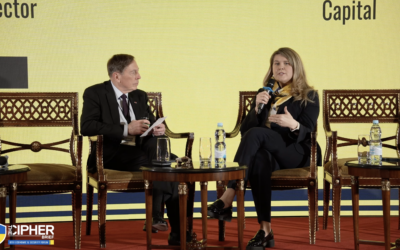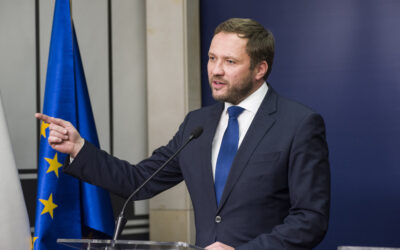
After Israel’s Retaliation Against Iran, What Comes Next?
SUBSCRIBER+ EXCLUSIVE REPORTING — For nearly a week, the Middle East and much of the world were on a knife’s edge, waiting for a promised […] More
Bottom Line Up Front
The issue of Turkey’s value and commitment to the North Atlantic Treaty Organization (NATO) remains an open question following Ankara’s recent purchase of Russia’s S-400 missile system. For several years, President Erdogan has resisted cooperation with NATO members, especially the United States, and sought to forge a stronger relationship with Vladimir Putin’s Russia. The relationship has grown particularly strained since the July 2016 attempted coup in Turkey. Since then, Ankara has lashed out at the U.S. publicly on a number of issues and has rarely hesitated to break rank with NATO, as evidenced by the latest purchase of the Russian missile system.
Turkish allegations that Washington played a role in the coup attempt impacts nearly all facets of the relationship between the two countries, serving as a wedge that has caused a serious fissure in a once predictable alliance. Many of these differences have manifested in the two countries’ respective approaches to Syria, including U.S. support for Kurdish militias that Turkey considers terrorist groups. Ankara has provided shelter for massive numbers of Syrian refugees, placing significant strain on Turkey’s economy and infrastructure. Ankara has also been the leading foreign direct supporter of anti-Assad rebels, some of which have linkages to hardened jihadist groups. But differences over policy have led to an even larger, more serious strategic gap between longstanding NATO allies, providing an opening for authoritarian states like Russia to fill the growing void.
Once Turkey took delivery of the S-400 in early July, the U.S. formally ejected Turkey from the F-35 program. On July 23, U.S. defense firm Lockheed Martin announced that it would establish alternative supply sources for the F-35 fighter, now that Turkey had been formally removed from the program. Prior to its removal, Turkey was a significant partner in the F-35 program, scheduled to purchase 100 of the advanced fighters while also serving as a critical node in the F-35 logistical supply chain. For months, the U.S. urged Turkey not to finalize the S-400 deal. And for months, Turkey told the U.S. the deal was a fait accompli, with Erdogan publicly flaunting his autonomy. The S-400 is designed to shoot down NATO aircraft, and the U.S. and other NATO members have consistently pointed out that purchasing certain advanced technology from non-NATO members, especially Moscow, was a non-starter and would have serious consequences.
Turkey has assumed a more confrontational posture toward the U.S. and Europe recently, and the purchase of the S-400 is more than just a symbolic gesture of the deteriorating relationship. Despite this, President Erdogan is optimistic that, even after Turkey’s expulsion from the F-35 program, his country will avoid major sanctions from the U.S. He is counting on support from U.S. President Donald Trump, who has shown an affinity for the autocratic Turkish ruler as he has for other such leaders. On Tuesday, Trump hinted at the need for ‘flexibility’ in dealing with Erdogan, suggesting some leeway on whether the President must push for sanctions. It remains unclear what will happen next, but one thing is certain—the U.S. must tread carefully, mindful of its waning influence with Turkey, an increasingly important global player, NATO member, and a country at the center of geopolitics in the Middle East.
Related Articles

SUBSCRIBER+ EXCLUSIVE REPORTING — For nearly a week, the Middle East and much of the world were on a knife’s edge, waiting for a promised […] More

BOTTOM LINE UP FRONT – Less than one week after Iran’s attack against Israel, Israel struck Iran early on Friday, hitting a military air base […] More

SUBSCRIBER+EXCLUSIVE INTERVIEW — While Ukraine deals with shortages of troops, munitions, and equipment for its air defenses, some Ukrainians are teaming up with foreign investors […] More

SUBSCRIBER+EXCLUSIVE INTERVIEW — With a mere 1.2 million citizens, Estonia is among NATO’s smallest members, but its contributions to Ukraine have led the pack by […] More

SUBSCRIBER+EXCLUSIVE BRIEFING — Drone weapons are part of the daily narrative of the war in Ukraine – from Russia’s use of Iranian drones against infrastructure […] More

SUBSCRIBER+ EXCLUSIVE ANALYSIS — Iran’s retaliatory strikes against Israel this weekend were both a potentially game-changing, historic first — and an underwhelming response. Historic, because […] More
Search